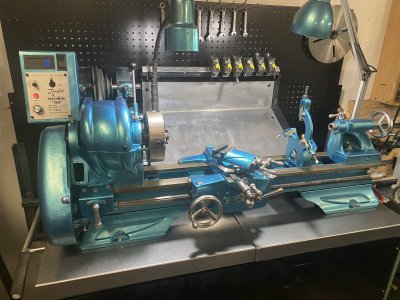- Joined
- Mar 22, 2014
- Messages
- 870
LOL... that is our unfinished basement. My wife lets me have it to myself because there are some spiders. I discovered that when we shut off the lights their eyes will glow for a few seconds. I showed this phenomenon to my wife and the basement has been all mine ever since. It serves as study, machine shop, woodworking shop, electronics shop, ham radio shack and billiards room. W2ANZ is my call sign, but the card on display is from 1941 from the previous assignee of the call.Please forgive that get sidetracked here, but what I get from your picture is..
.. is that a bookcase, and a Hi-Fi speaker, and carpets??
For a minute there, I thought you might be the kind of hero who sets up his machine in his lounge living room, or maybe has turned his shop into a multi-purpose living space, but then I see the wall blocks behind the motor, and the surface plate gauges near what looks like a W2AXZ QSL card!


